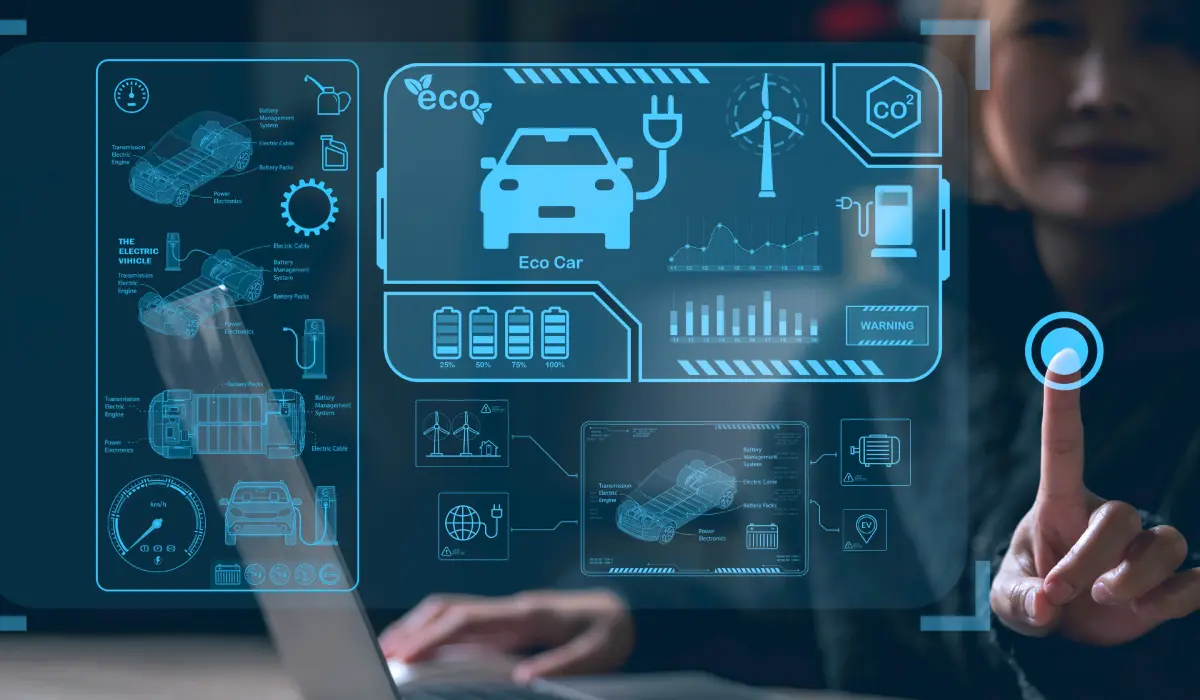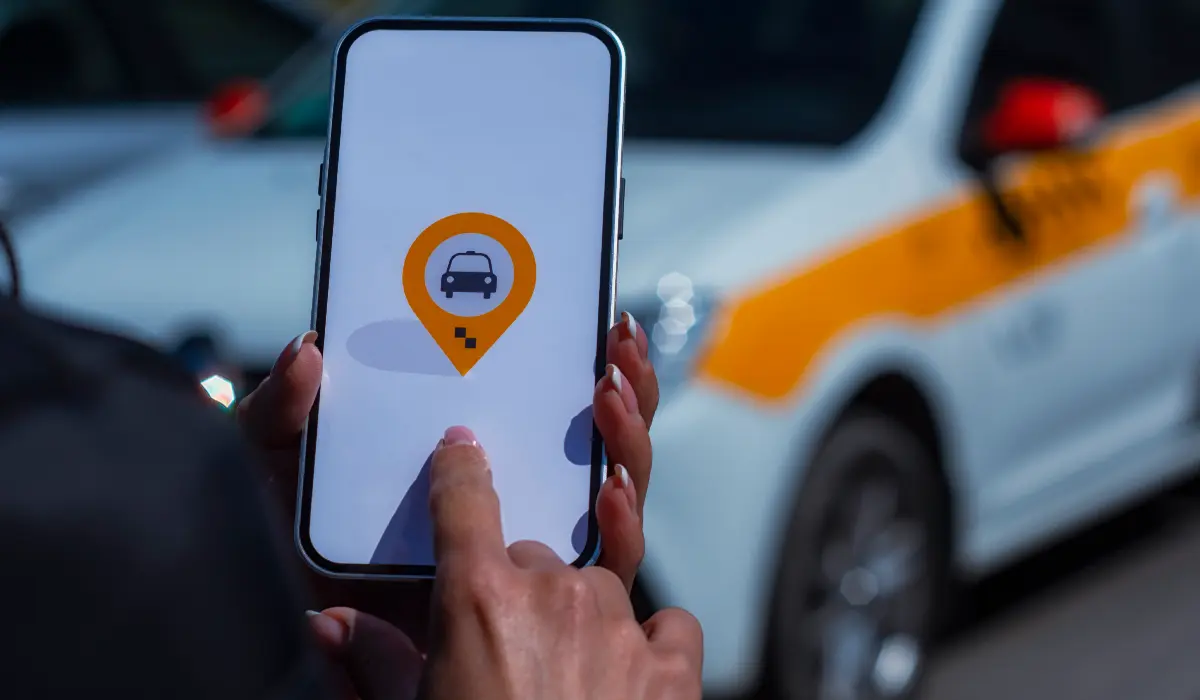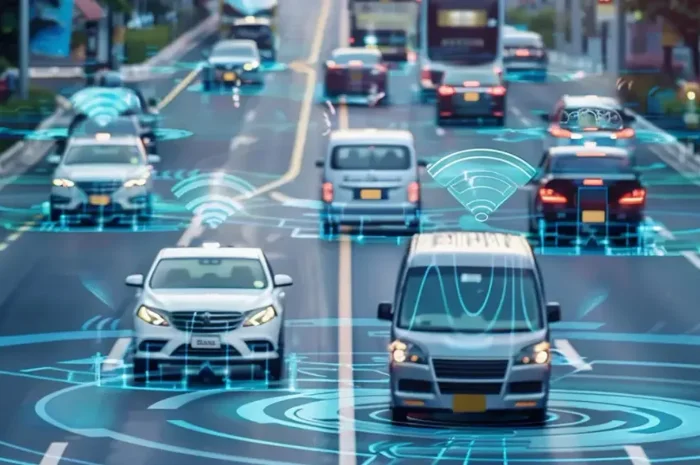What is Automotive IoT?
IoT is all about establishing connectivity between different hardware systems. Usually, these are physical devices like sensors, gadgets, and mechanical parts of a vehicle.
By making this connection, automakers aim to improve and add various functionalities such as real-time fuel monitoring into their vehicles. That’s the basic role of the Internet of Things but it offers a multitude of advantages.
How is IoT Helping the Automotive Industry
Both car manufacturers and drivers are getting advantages from this technology. Let’s see how.
Benefits of IoT for Manufacturers

1. Monitoring the Production Process
Maintaining consistent high product quality is one of the biggest challenges in the automotive industry. Even a small defect can bring huge losses.
IoT helps in tracking everything that happens on the production line in real-time situations. How?
By collecting data from the key devices/parts/components, manufacturers can identify any issue or deviation from the standard requirements. This real-time monitoring saves money and improves efficiency.
2. Improving Vehicle Life
IoT is very useful in identifying vehicles’ repair and maintenance needs. Sensors implemented on the parts such as the engine send crucial information about the vehicles’ performance.
This data helps in predicting when a part is likely to fail or when to schedule the next maintenance. For fleet management companies, this data is key to reducing downtime and improving overall vehicle reliability.
3. Improving Vehicle Design
The data collected from connected cars can provide valuable insights into how drivers are using their vehicles. This information is useful to make future cars safer, more efficient, and more user-friendly.
Benefits of IoT for Buyers
1. Enhancing Safety
Automakers are investing heavily in technologies that make their vehicles safe and efficient. IoT is one of them. Automatic emergency braking and lane departure warning systems are powered by this technology to prevent accidents on the road.
IoT also helps in reducing the potential collisions of connected cars by improving communication between them. It also helps in detecting fog, rain, or sudden environmental changes and alerts drivers before the situation becomes worse .
2. Personalizing Experience
IoT not only establishes intra-connectivity but also interconnectivity. For example, users can remotely start their cars through smartphones, or stream music. This interconnectivity between car and smartphone offers smooth and personalized experiences to the users.
3. Lowering Costs
IoT saves car drivers from expensive repairs. With sensors monitoring a car’s health, they can identify issues before they turn into major problems.
The next area where this technology is helping drivers is software updates. It is a time-consuming process and requires frequent visits to the service centres. With “over-the-air” updates, software updates are wireless and quick, just like updating smartphones.
Real Applications of IoT in the Automotive Industry

1. Smart Parking
Drivers in the U.S. spend approximately $500 monthly just on parking. IoT can reduce this parking bill through smart parking solutions. Drivers can access these solutions via mobile app and identify parking spots close to them.
They can check rates and occupancy of parking spots without wasting time and gas on searching for space manually.
2. Smart Cars
IoT is at the forefront behind connected cars and vehicles. Manufacturers like Tesla and Mercedes-Benz are using this technology to make their cars smarter and more efficient.
For example, the autopilot system in Tesla’s smart cars is reducing the workload while enhancing drivers’ safety.
It has cameras and sensors to connect with the surrounding devices and collect data to assist drivers on the road.
3. Smart Infotainment
Automotive IoT is modernizing the way drivers interact with their vehicles. It connects vehicles’ infotainment systems such as touchscreen displays with smartphones to offer a rich multimedia experience.
4. Smart Traffic Management
Another best use case of IoT in the automotive industry is traffic management in real-time. Authorities can check which route is busy and where traffic flow is less through traffic lights embedded with the sensors.
With this data, they can increase or decrease the duration of traffic signals to optimize the traffic flow. It also helps drivers to find alternative routes to reach their destination fast in case of busy routes.
5. Fleet Management
From tracking drivers’ speed to fuel in their vehicles, IoT is giving full visibility of the drivers and vehicles on the road. For fleet management and vehicle rental companies, this data is like a goldmine to save their cost of operations and maintenance.
A fleet management software communicates all this data to fleet managers for managing the fleet operations and maintenance schedules.
Challenges in the Path of Automotive IoT
The connected car revolution comes with its own set of challenges:
- Security and privacy concerns: With a car constantly transmitting data, there’s a risk of hacking and unauthorized access to personal information. Robust cybersecurity measures are therefore crucial to ensure users’ trust in sharing this data with car manufacturers.
- Technical glitches and hacking vulnerabilities: The increased connectivity in the connected cars also increases the risk of malfunctions due to hacking attempts.
- Infrastructure limitations: Seamless connectivity is essential for many IoT features. However, limitations in cellular network coverage and a lack of standardized infrastructure can hinder the full potential of Automotive IoT.
The Future of Automotive IoT
Despite these challenges, the future of Automotive IoT has exciting possibilities. Integration with Artificial Intelligence (AI) will pave the way for self-driving cars, revolutionizing transportation and improving road safety.
Autonomous fleets and on-demand mobility solutions will become commonplace, offering greater flexibility and efficiency in how we travel.
Car ownership models might evolve towards subscription-based services, with cars constantly connected and updated with the latest technology.
Conclusion
Automotive IoT is not just about connectivity; it’s about fundamentally changing the way we interact with our cars. However, fully autonomous vehicles are not the reality, yet which indicates technology needs to be more mature. Also, ethical implications, data privacy, and security challenges must be addressed to make full use of IoT in the automotive industry.



